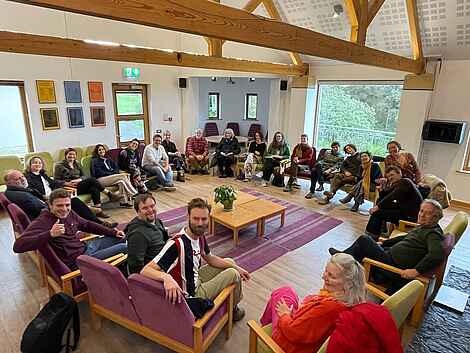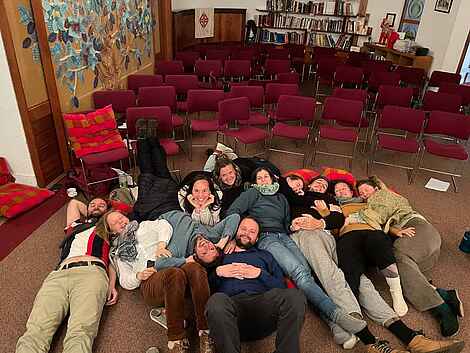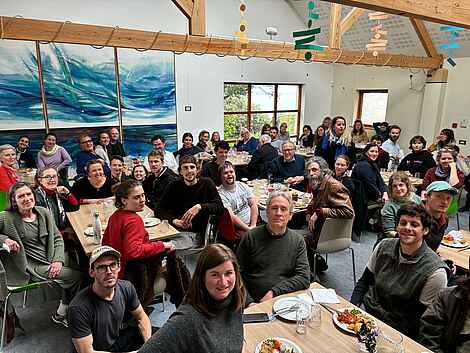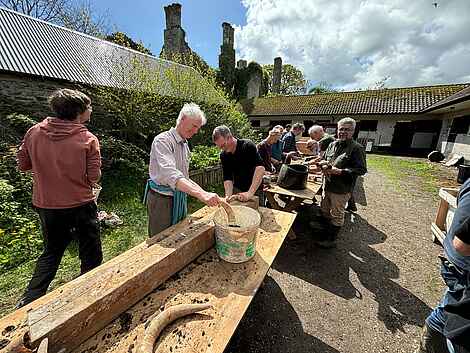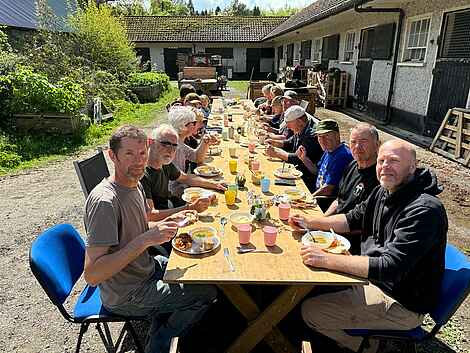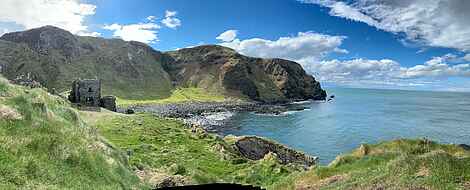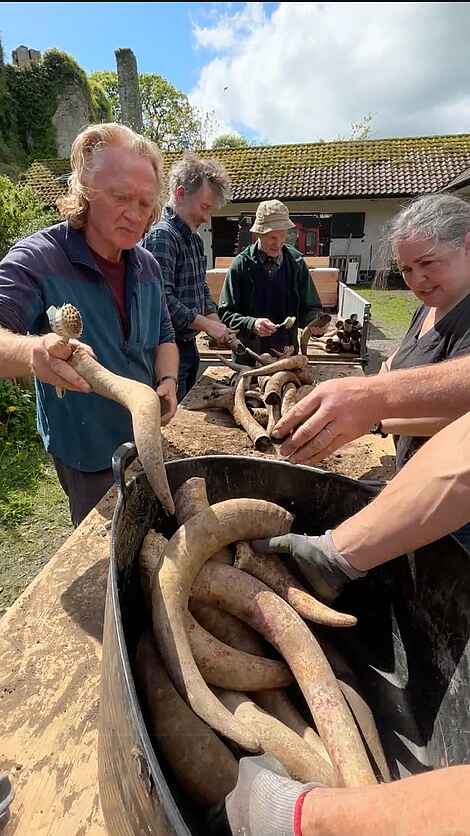I have always wanted to visit Ireland. Its people and landscapes, the richness of the culture, and the ancient sites always appealed to me, and especially after reading about the Hibernian Mysteries I felt drawn to discover the land. I was very happy when I was invited by David Fairclough from the Irish Anthroposophical Society to attend a meeting in Ireland during Easter week entitled "The Light in the Depths." The invitation I received said, “Open to anyone with questions about the spiritual world and inner soul life, as well as anyone wanting to explore anthroposophy as a modern path of initiation,” and that really captured my attention.
My trip was divided into two aspects, each lasting a week. During the first week, from the 12th to the 20th of April, I participated in the conference which took place at Corrymeela in Ballycastle, a town on the northern coast of Ireland. The event was organized by the Anthroposophical Society in Ireland in collaboration with other parties. Corrymeela is an organization that was originally established to support individuals and communities affected by the violence and polarization of the Northern Irish conflict.
A warm and enthusiastic environment was created during the five-day gathering, which included lectures, workshops, inner research, poetry and art, and stimulating conversations happened throughout the day. I was pleased to see that of the approximately 100 people, most of the attendees were young people from different parts of the world. We often wonder if young people are interested in anthroposophy and spirituality, and this conference, which was lively and profound, clearly showed that the youth perspective brings hope and enthusiasm for the future of Anthroposophy. During the gathering there was a balance of deep study, artistic expression in the form of music, poetry, dance, and reverence for the Easter week and the ancient mysteries.
The central theme of the meeting was the Hibernian Mysteries, as presented through Rudolf Steiner’s spiritual research. In his approach, Rudolf Steiner considers the ancient initiation rites of Ireland and he explores the historical narrative, in which people were guided through experiences of polarity, such as between science and art, winter and summer, other and self, or past and future. Through this path of self-knowledge, students were brought to a first-hand encounter and transformational experience of the “light found in the depths.”
During the lectures and workshops, it became clear that polarization remains an ongoing reality today, as evidenced by the divided world around us. One of the aims of the gathering was to develop the skills needed to navigate these realities and which can guide us towards a future based on empathy and inclusion. With the contributions and guidance of the keynote speakers, we were able to weave through and contemplate these themes. Orland Bishop brought his unique ability to contain the space for working with these very profound questions, while blending an anthroposophical understanding with other mystery streams. Linda McKeown and Martin Donnelly, Martin Henry, Lisa Romero, Joan Sleigh, and James Dyson were also able to enrich the discussions and contribute to a deep cultural, historical, and evolutionary framework.
The second week of the journey was devoted to visiting Camphill communities, farms, and a Waldorf school in the region.
The Camphill movement in Ireland was introduced by its founder, Dr. Karl König. In 1938, he began his correspondence with the Irish government, outlining his vision for inclusive, therapeutic communities for people with special needs. The government at the time did not take up his proposals, however. It was not until 1954 that the first Camphill in Northern Ireland was established in Glencraig, while in 1972, the first Camphill in the Republic of Ireland was established in Duffcarrig.
Since then, more than 16 communities were established in Ireland and they have emphasised a farm-based community in which people with special needs play an active role in all farm activities. Many of the first biodynamic farming practices in the country were historically associated with the development of Camphills. Since then, many other farms have developed, and young farmers are working with experienced farmers and bringing promising new projects.
In recent years, the Camphill movement has been deeply affected by changes in governmental regulations and restrictions. A vast number of the original Camphill communities have ceased to operate or are now under government control. In fact, a recent assessment of life and work in the Camphill communities in Ireland indicates that many are no longer inspired by the work of Rudolf Steiner and Karl König; rather, they are regulated and managed by government agencies, and only retain the name “Camphill” without having any link to the original intentions. However, some projects thrive despite the restrictions and due to the people working in these communities who are still very active developing new projects of all kinds, and several have biodynamic gardens. This is the case of West Court Garden Center, led by Gladys Lydon, where an enthusiastic group of gardeners, teachers, volunteers, and students work to recover an ancient site, transforming it into a beautiful and active biodynamic garden and learning center.
I was invited to attend a meeting of farmers organized by the Irish Biodynamic Association, to work on biodynamic preparations and give a talk in a community hall which was very well attended. From there, I continued traveling to visit additional farms – all very inspiring projects in different stages of development, each showing an example of how biodynamics in Ireland has a strong identity and a promising future.
I traveled to the Thomastown Community Center in Kilkenny, where I was asked to speak on the rhythms and cycles in nature and biodynamic practices focusing on Community Supported Agriculture. The last stop on the journey was at the Biodynamic Agricultural Association of Ireland, during its spring gathering day at Calverstown Organic Farm, owned by Kim and Mireille McCall. It was a harmonious, fraternal gathering of about 25 farmers from 12 regions of Ireland, all gathered to obtain prep 500 from approximately 600 horns which the participants dug up from the earth.
Overall, several highlights stand out from my tour in Ireland. First, the solid community of young people in anthroposophy and biodynamic agriculture points to a very promising future for this work in Ireland. Next, the resilience and adaptive capacities of the Camphill communities, and the depth of spiritual commitment that is underlying in the community work. Additionally, each stop along my journey reflected to me the joy of working with the people and the land, and I look forward to future collaborations.
